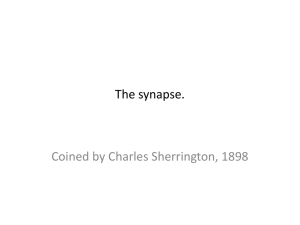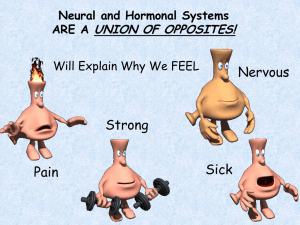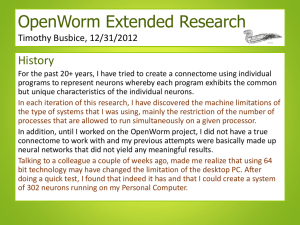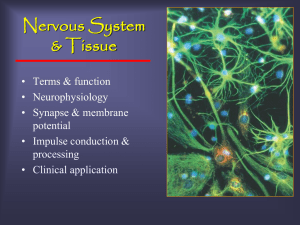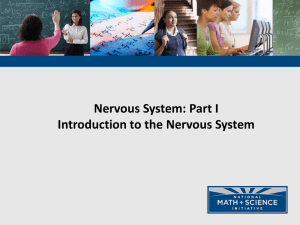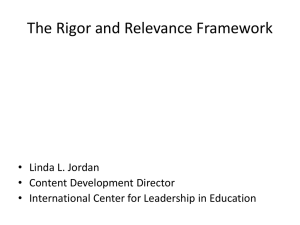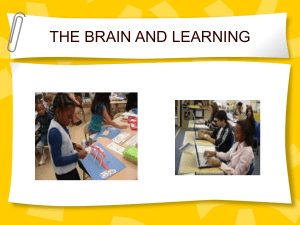Synapse formation
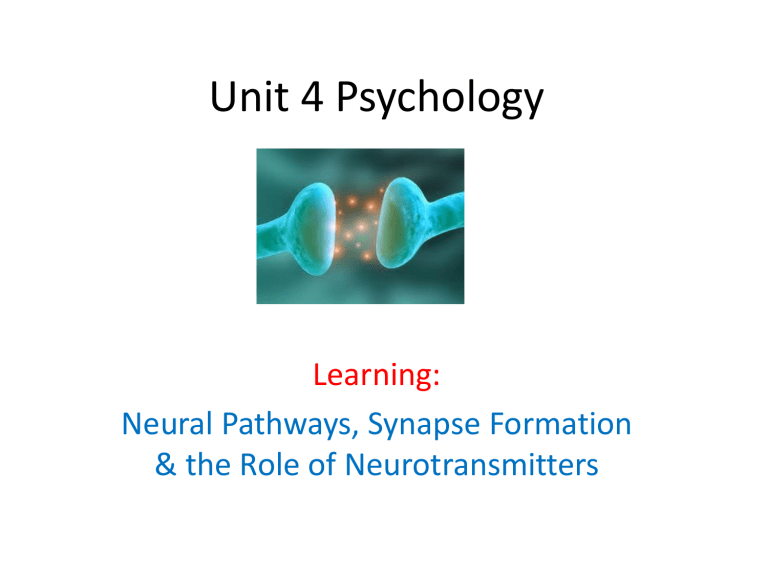
Unit 4 Psychology
Learning:
Neural Pathways, Synapse Formation
& the Role of Neurotransmitters
Synapse Formation in Learning
• A neural pathway (also referred to as neural tract) is a bundle of myelin-covered neurons (white matter) which provide a connection between one part of the nervous system and another.
• Synapse formation during learning involves:
– Creation of new neural pathways
– Strengthening of existing neural pathways
Neural synapse http://www.youtube.com/watch?v=
HXx9qlJetSU
Synaptogenesis
• The forming of new synapses or moulding of existing synapses
• Particularly evident during early childhood
– Also occurs in parts of the adult brain
Synapse: Zone / junction between two neurons
– Comprises: axon terminal of presynaptic neuron, the synaptic gap, and the dendrite of the postsynaptic neuron.
During Learning:
– axon terminals of the presynaptic neuron release a neurotransmitter called glutamate into the synaptic gap between the presynaptic neuron and the dendrites of a neighbouring postsynaptic neuron
Neuron Changes during Learning
Filigree Appendages
• As the process of learning new information or a new skill occurs, the neurons form new connections with each other.
• These new ‘sprouts’ grow from the axon terminal of a presynaptic neuron towards the dendrites of neighbouring postsynaptic neurons
Learning means:
• Strengthening of the neural pathway between neurons.
• Newly learnt information to be transferred from one neuron to the next is more efficient
• The more that a particular neural pathway is activated during learning, the more likely it is to be strengthened and the less likely the learning will be forgotten.
Neural Basis of Learning:
Hebbian theory
• Learning results in the creation of cell assembles or neural networks
• ‘neurons that fire together wire together’
• When a neurotransmitter is repeatedly sent across the synapse this can effect the strength of these connections
• Neurons that do not fire together weaken their connections
Neural Basis of Learning :
Kandel’s Research
• Research on the cellular basis of learning and memory formation in the Aplysia (sea hare) found that learning resulted in strengthened synapses between the sensory neurons (activated by the touch of the glass rod) and motor neurons (response of flexing gill muscle).
• The greater the number of learning trials, the more readily activated the presynaptic and postsynaptic neurons became.
• A small number of learning trials produced changes which lasted from 10 minutes to a few hours.
• A greater number of trials produced changes which lasted for several days (Bailey & Kandel 1995; Martinez & Derrick
1996).
Long-term Potentiation (LTP)
• Long-term potentiation (LTP) is a process that has been produced only in laboratory settings, where presynaptic neurons that are electrically stimulated will increase the tendency of a group of neighbouring postsynaptic neurons to fire.
• That is… that neurons which have been stimulated will have a greater ‘potential’ to fire when they are stimulated again.
The Role of Glutamate in Learning
• When learning takes place, neurons excite one another through the release of neurotransmitters. In this process,
glutamate is released by the presynaptic neurons.
• Glutamate is the main excitatory neurotransmitter in the brain for learning.
• When glutamate is released by the presynaptic neuron, it acts on two types of glutamate receptors in the postsynaptic neuron: AMPA & NMPA
– the AMPA receptor which activates the postsynaptic neuron.
– the NMDA receptor produces long-lasting modifications to the synapse.
Dopamine Effects on Neurons
• Repeated Glutamate release stimulates the release of
Dopamine
• Dopamine activates genes in postsynaptic neurons to produce additional dendritic spines.
– Outgrowths from the dendrites in the synaptic gap.
• This in turn makes the postsynaptic neuron more sensitive to future firing by other neighbouring presynaptic neurons.
• Process takes about 30 minutes
The Effects of Dopamine on Learning
• Dopamine is a neurotransmitter that is associated with pleasurable feelings.
• When a learner shows a behaviour that is followed by a pleasant consequence or reward, the behaviour is likely to be repeated.
• Humans will repeat behaviours that cause the release of dopamine and therefore the connection between the neuron increases.
• With repeated activations of the neurons in the amygdala
(through repeated pairings of the behaviour and the reward) the neurons are more readily able to release dopamine and adjacent neurons become more easily activated by dopamine.
• It is little wonder that dopamine is also linked with addiction.
Long Term Potentiation
Review - Learning, Memory and the
Anatomy Behind it all
Next Time in Psych
• Plasticity of the Brain




